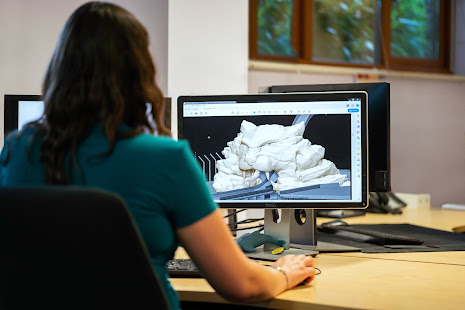Online 3D Modeling Software: A Comprehensive Guide
In today's digital age, 3D modeling has become an essential tool in various
industries, including architecture, animation, game design, and product
development. With advancements in technology, accessing and using 3D modelingsoftware has become easier and more affordable than ever before.
In this comprehensive guide, we will explore the world of online 3D modelingsoftware, their benefits, features, and some popular free options available in
the market.
What Is 3D Modeling
3D modeling is the process of creating a three-dimensional representation of
a physical object or scene using specialized computer software. This digital
representation can be used for various purposes, including design
visualization, animation, simulation, and more. 3D modeling has become an
integral part of many industries, making it an essential skill for
professionals in fields such as architecture, engineering, film, and gaming.
What Is 3D Modeling Software
3D modeling software is a type of computer program that allows users to
create, edit, and render 3D models. These programs offer a range of tools and
features that enable users to build complex models, apply textures and
materials, and create realistic lighting and shadows. Some 3D modeling software
also includes animation and simulation capabilities, allowing users to bring
their models to life.
How Does a 3D Modeling Software Work
3D modeling software works by utilizing mathematical representations of 3D
objects, known as geometry, to create a virtual environment in which users can
manipulate and modify the objects as needed. The software employs various
algorithms, tools, and techniques to create and manipulate these digital
representations, allowing users to design, visualize, and render complex 3Dmodels.
Here are some key components and processes involved in 3D modeling software:
1. Geometry:
The foundation of any 3D model is its geometry, which is made up of points,
lines, and polygons that define the shape and structure of the object. These
elements are connected to create a 3D mesh, which forms the basis of the model.
2. Texturing:
To make the model look realistic, textures are applied to the 3D mesh. Textures
are 2D images that wrap around the model to create the appearance of various
materials, such as metal, wood, or fabric. Texturing also includes adding
details like bumps, scratches, and reflections to further enhance the model's
realism.
3. Lighting:
Proper lighting is essential for creating a realistic and visually appealing 3D
model. 3D modeling software provides various lighting options, such as ambient,
directional, and point lights, allowing users to control the intensity, color,
and direction of light sources within the virtual environment.
4. Rendering:
Rendering is the process of converting the 3D model into a 2D image or
animation, taking into account the geometry, textures, and lighting. This
process uses complex algorithms to calculate how light interacts with the
model's surfaces and produces a realistic and visually appealing final result.
5. Animation
and Simulation: Some 3D modeling software also includes tools for animating and
simulating 3D models. This allows users to create movement and interactions
between objects, as well as simulate real-world physics such as gravity, collisions,
and fluid dynamics.
What Are the Benefits of Online 3D Modeling Software
There are many benefits of using online 3D modeling software. These include:
1. Accessibility:
Online 3D modeling software can be accessed from anywhere with an internet
connection, making it convenient for professionals who need to work remotely or
collaborate with colleagues around the world.
2. Cost-Effectiveness:
Many online 3D modeling programs offer free or affordable pricing options,
making them accessible to individuals and businesses with varying budgets.
3. Ease
of Use: Online 3D modeling software is often designed with user-friendly
interfaces and intuitive tools, making it easier for beginners to learn and
start creating models quickly.
4. Collaboration:
Online 3D modeling platforms often include collaboration features that allow
users to work together on projects, share models, and provide feedback in
real-time.
5. Regular
Updates: As online 3D modeling software is cloud-based, updates and new features
can be rolled out more frequently, ensuring that users have access to the
latest tools and technologies.
Conclusion
Online 3D modeling software has revolutionized the way professionals create,
design, and visualize 3D models. The benefits of using these programs include
accessibility, cost-effectiveness, ease of use, collaboration, and regular
updates. Whether you are an architect, engineer, game designer, or product
developer, online 3D modeling software is an essential tool that can help you
bring your ideas to life. With the right online software, the possibilities for
creativity and innovation are endless.

Comments
Post a Comment